|
(A Centennial History of No 10 Squadron) by Ian Macmillan with Dick King |
Air of Authority - A History of RAF Organisation
No 6 Squadron#
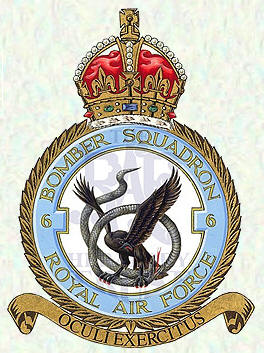 Formed
on 31 January 1914, again at Farnborough, it transferred most of its aircraft
to the other squadrons in August 1914 and did not arrive on the Continent
(Belgium), itself until October. However, it was soon on the move as the
British Army retreated back into France. It immediately adopted the role
of a corps squadron, which it maintained throughout the war.
Formed
on 31 January 1914, again at Farnborough, it transferred most of its aircraft
to the other squadrons in August 1914 and did not arrive on the Continent
(Belgium), itself until October. However, it was soon on the move as the
British Army retreated back into France. It immediately adopted the role
of a corps squadron, which it maintained throughout the war.
Following the Armistice it was transferred to Iraq, arriving in July 1919. Operating in the Army Co-operation role in Northern Iraq, equipped with Bristol Fighters, the squadron remained there for ten years before moving to Egypt in 1929.
In June 1931 it re-equipped with Gordons having assumed the bomber role on 1 April 1931 and these were replaced by Harts in 1935. Following problems in Palestine, the squadron relocated there in 1938 reverting to the Army Co-operation role with Hardy's, adding Gauntlets and Lysanders later.
It eventually left Palestine and started operations in the Western Desert, with Lysanders, in September 1940, although the squadron HQ remained in Palestine. Gradually Hurricanes replaced Lysanders in the tactical reconnaissance role, being fully equipped by June 1941. However, in August, these were replaced by Lysanders and Gladiators with some Blenheims and Hurricanes being added later, but all were removed again in January 1942 when the squadron assumed maintenance duties.
Receiving Hurricane IIDs in April 1942, the squadron now took on the role for which it would excel - 'tank busting', its Hurricanes being fitted with two 40mm under the wings. This role is commemorated in the nickname and its unofficial badge - 'The Flying Can-openers'. Converting to rocket firing Hurricanes, it fought through Italy and over the Adriatic and Balkans, returning to Palestine in July 1945.
It eventually replaced its last Hurricanes in late 1946, although it had operated some Spitfires since late 1945, becoming the last squadron to operate the type as first line equipment. Following Israeli independence in 1946, the squadron moved to Cyprus where it re-equipped with Tempests. In November 1947 it went to the Sudan, returned to Egypt in May 1948 and then continued to move around the Middle East until 1956 when it moved back to Cyprus. During these moves it had re-equipped with Vampires in 1949, Venoms in 1954 and the Canberra in 1957.
On 13 January 1969, it was reduced to cadre and returned to the UK, the first time it had operated from there since 1914; where on 7 May 1969 its badge and standard were handed over to a new No 6 Squadron which had been in formation as a Phantom unit at Coningsby in the tactical reconnaissance and ground attack role. However, on 1 July 1974, No 6 (Designate) Squadron began forming at Lossiemouth as a Jaguar unit and on 30 September 1974 the Phantom unit was disbanded with the squadron number-plate being transferred to the Jaguar unit. In November 1974 the new No 6 Squadron moved south to RAF Coltishall, where it remained until April 2006, when it moved to Coningsby. However, plans for the withdrawal of the Jaguar were accelerated and the squadron was disbanded for the first time in its history on 31 May 2007. The unit reformed as a Typhoon unit on 6 September 2010 at RAF Leuchars, with their Standard being presented on 8 September where it took over the Northern QRA from the Tornadoes of No 111 Sqn in early 2011.
| Standards | Battle Honours* |
| Award of Standard originally announced on 7 Sep 1943,
effective from 1 Apr 1943 but
presented:- lst - 31 January 1954 2nd - 31 October 1980 ACM Sir Keith Williamson 3rd - 1 Apr 2006 ACM Sir Jock Stirrup |
Western Front, 1914-1918:
Neuve Chappelle: Ypres, 1915: Loos: Somme, 1916: Ypres, 1917 Amiens: Hindenburg Line:
Egypt & Libya, 1940-1943: El Alamein: El Hamma:
Italy, 1944-1945:
South East Europe, 1944-1945: Gulf, 1991
Iraq, 1919-1920: Kurdistan, 1922-1924: Palestine, 1936-1939: Iraq 2003: |
Squadron Codes used: -
| ZD | Nov 1938 - May 1939 |
| XE | allocated May 1939, but probably not carried |
| JV | Sep 1939 - Jul 1943, Jan 1946 - Oct 1949 |
| EA - EZ | Aug 1986 - Current |
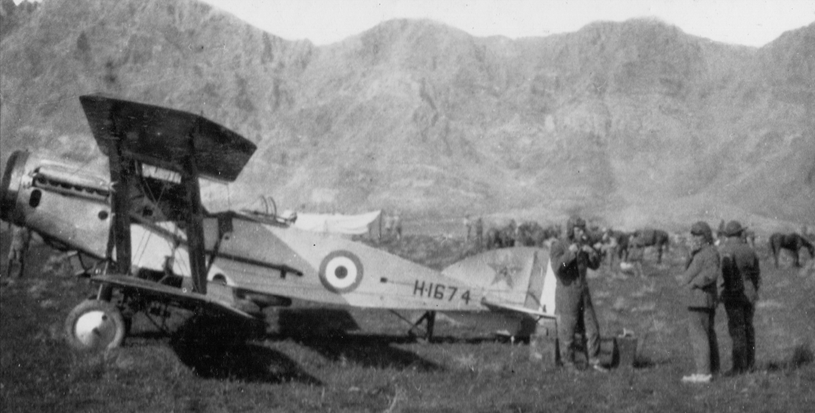 |
| Bristol F2B, H1674 served with No 6 Squadron from 1923 to 1924 |
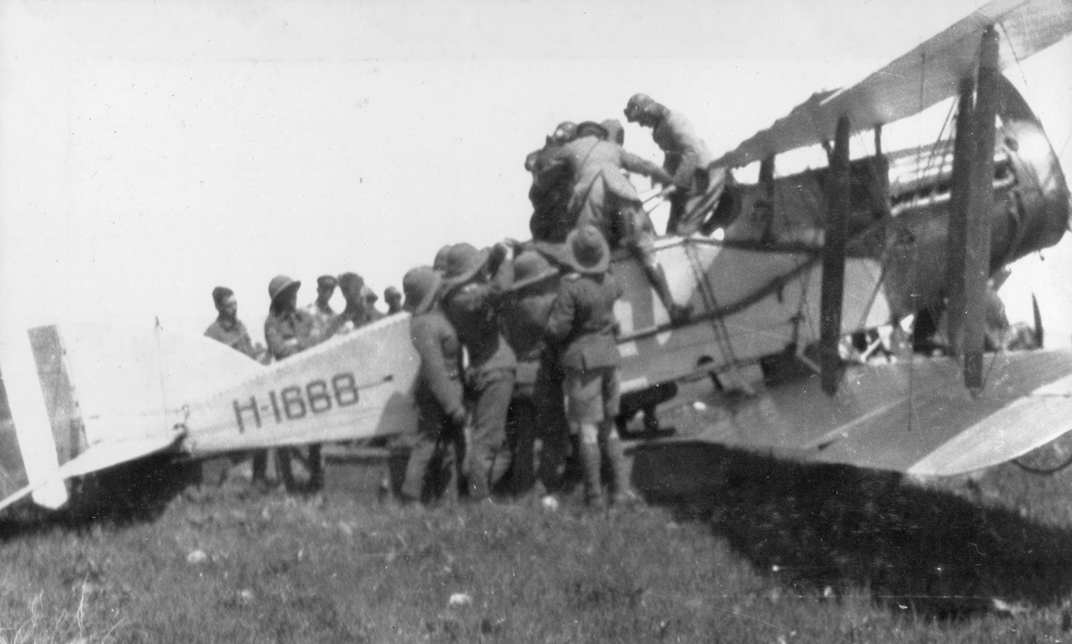 |
| Bristol F2B, H1668 served with No 6 Squadron from November 1921 to January 1924 and was then returned the manufacturers for reconditioning into a dual control machine and later served with the School of Army Co-operation from April 1927 to June 1928. |
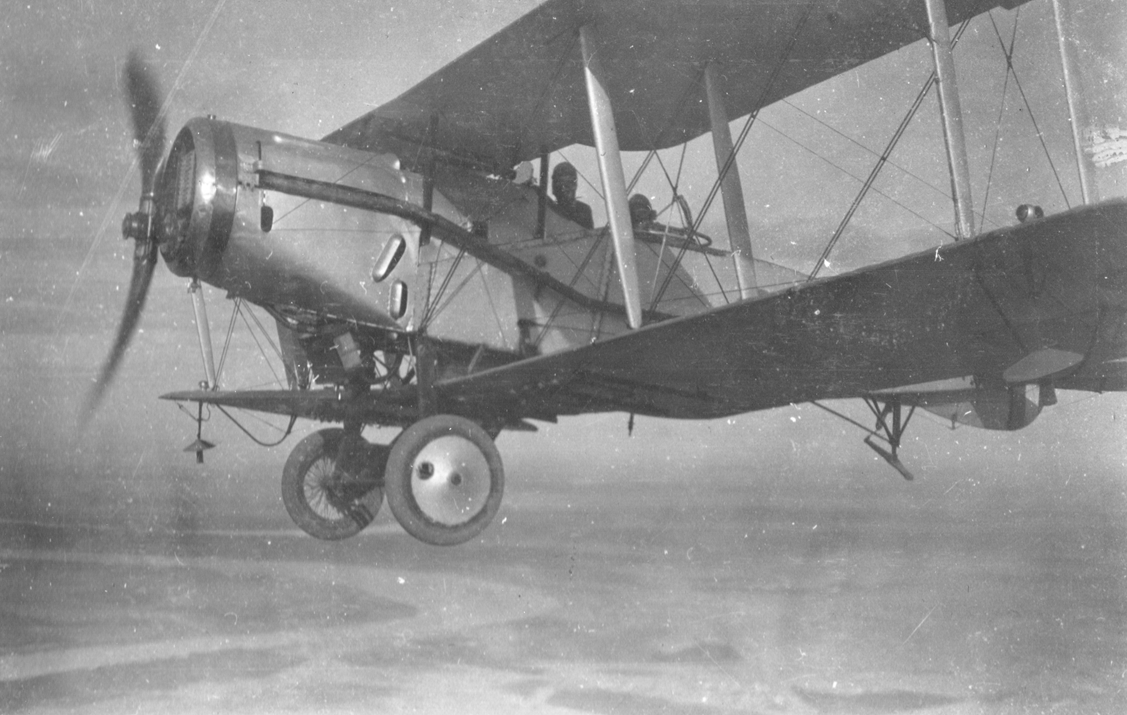 |
| c |
| These photos are from the collection of Air Commodore (then a Plt Off/Fg Off) D W F Bonham-Carter CB, DFC courtesy of his grandson, Jim Cownie |
 |
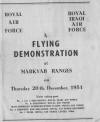 |
 |
| Photos of No 6 Squadron 1952 | ||
[Aircraft & Markings | Personnel, aircraft and locations | Commanding Officers]
No 6 Squadron Association: -
Webmaster: - George Robertson
Newsletter Editor: - Alan Bailey
No 6 Squadron Association website
 The
last squadron to be formed before the start of world war one, an event which
took place on 1 May 1914 at Farnborough. Remaining in Britain until April
1915, it undertook experimental duties. When it eventually arrived in
France it was as a corps squadron, initially using BE2's and later RE8's.
Returning to Britain in September 1919 it disbanded on the last day of the year.
The
last squadron to be formed before the start of world war one, an event which
took place on 1 May 1914 at Farnborough. Remaining in Britain until April
1915, it undertook experimental duties. When it eventually arrived in
France it was as a corps squadron, initially using BE2's and later RE8's.
Returning to Britain in September 1919 it disbanded on the last day of the year.
Its next reincarnation was in the role for which it would spent the bulk of its existence, a bomber unit, which took place on 1 June 1923 at Bircham Newton equipped with Vickers Vimys. Virginias arrived in 1927, Heyfords in 1935 and eventually Whitleys in 1938, although some Wellesleys had been allocated to 'B' Flight, but this was hived off to form No 76 Squadron on 12 April 1937.
Hampdens replaced Whitleys in April 1939 but the squadrons was allocated to advanced training on 1 June 1939, eventually merging with its offspring, No 76, to form No 16 OTU on 4 April 1940. The squadron briefly reformed on 30 April 1940, with Hampdens, but disbanded once again on 20 May 1940.
However, on 1 August 1940, the squadron was reformed at Leeming and it was now allocated the major task of introducing the Stirling bomber into RAF service, taking them into action for the first time on 10 February 1941. It continued to operate Stirlings, initially as part of No 3 Group and as part of the Pathfinder Force/No 8 Group until 28 June 1943, when it converted to Lancasters.
It flew Lancasters for the rest of the war and in the immediate post war era, before re-equipping with Lincolns in August 1949. From 1 February 1949 until 8 December 1953, No 7 was linked with No 76 squadron in an attempt to maintain squadron identities. Whilst equipped with Lincolns, it sent detachments to Malaya to take part in Operation Firedog until 1 January 1956, the squadron disbanded at Upwood. A new era arrived on 1 November 1956, when No 7 joined the V-Bomber force equipped with Valiants at RAF Honington, but it was not destined to be re-equipped with the newer V-Bombers and on 1 September 1962, the squadron disbanded again, having moved to Wittering on 26 July 1960.
It was nearly eight years, May 1970, before No 7 returned and this time it was as a Target Facilities unit at St Mawgan in Cornwall, equipped with Canberras. Carrying out these duties until 1981, the squadron disbanded again to be reformed in yet another role, support helicopter, on 1 September 1982 at Odiham. Now equipped with Chinooks, it provides the UK based medium lift capacity to the Army.
| Standards | Battle Honours* |
| Award of Standard originally announced on 7 Sep 1943,
effective from 1 Apr 1943 but
presented:- 1st - 9 October 1953 2nd - 8 June 1978 HRH Princess Alice, Duchess of Gloucester 3rd - 4 Apr 2004 HRH The Prince of Wales |
Western Front, 1915-1918: Ypres, 1915: Loos: Somme, 1916: Ypres, 1917: Fortress Europe, 1941-1944: Biscay Ports, 1941-1944: Ruhr, 1942-1945: German Ports, 1942-1945: Berlin, 1943-1945: France & Germany, 1944-1945: Normandy, 1944: Rhine: Gulf, 1991: Iraq 2003: Iraq 2003-2011: |
Squadron Codes used: -
| LT | Nov 1938 - Sep 1939 |
| MG | Aug 1940 - Apr 1951 |
| XU | Jun 1943 - 1945 |
| EA - EZ | Used on Chinooks |
[Aircraft & Markings | Personnel, aircraft and locations | Commanding Officers]
No 7 Squadron Association: - Chairman: Malcolm Reeves, 5 Farfield Avenue, Knaresborough, North Yorkshire, HG5 8HB Tel: 01423 860999, email; malreevesATyahoo.com
 With
the growing need for air support on the Western Front new squadrons began to be
formed with No 8 being formed on the
New Year's Day 1915 at Brooklands. Operating throughout world war 1 in the
corps reconnaissance role, first with BE2's and later FK8's, it received Bristol
Fighters just after the Armistice remaining on the continent until July 1919
when it returned to Britain, disbanding at Duxford on 20 January 1920.Reforming
in Egypt on 18 October 1920 with DH9As, it moved to Iraq in February 1921,
the RAF having been given responsibility for policing the area. In 1927
the squadron moved again, this time to Aden, where it would remain except for a
short period until 1967.
With
the growing need for air support on the Western Front new squadrons began to be
formed with No 8 being formed on the
New Year's Day 1915 at Brooklands. Operating throughout world war 1 in the
corps reconnaissance role, first with BE2's and later FK8's, it received Bristol
Fighters just after the Armistice remaining on the continent until July 1919
when it returned to Britain, disbanding at Duxford on 20 January 1920.Reforming
in Egypt on 18 October 1920 with DH9As, it moved to Iraq in February 1921,
the RAF having been given responsibility for policing the area. In 1927
the squadron moved again, this time to Aden, where it would remain except for a
short period until 1967.
January 1928 saw the DH9As replaced by Fairey IIIF, with Vincents coming in April 1935. Some Blenheims were taken on strength in 1939 but Vincents remained the main equipment until 1942. During this period No 8 carried out attacks against Italian East Africa and after the collapse of the Italian forces in the area, they undertook anti-submarine patrols and internal security operations. Hudsons joined the squadron in March 1943 and Wellingtons in December and by the end of the following month, the squadron was wholly equipped with the type. The squadron continued in this vain until 1 May 1945, when it was disbanded.
Two weeks later the squadron was reformed by re-numbering No 200 operating in India before moving to Ceylon, where they were now flying Liberators on special duty missions and supply dropping to irregular forces in Malaya. Following the Japanese surrender operations continued but in November 1945, the squadron once again disbanded.
In its absence No 114 Squadron had been 'holding the fort' in Aden and on 1 September 1946 No 8 returned to its 'ancestral home' when No 114 was re-numbered. It now reverted to the internal security role it had fulfilled up to 1943 but now equipped with Mosquitos and later Tempests, Brigands, Vampires and Venoms until January 1960 when it received Hunter FGA 9s, although it had used Meteors fighter recce aircraft at times. Hunter FR 10s also joined the squadron in April 1961 and it continued to operate both these models up until its disbandment on 15 December 1971 at Sharjah, the squadron having left Aden in 1967, when British forces withdrew from the Protectorate.
The squadron came into existence again on 8 January 1972, this time in the UK - the first time the squadron had serve here since 1920 - but in a totally different role. Equipped with modified Shackleton Mk 2s it took on the role of Britain's airborne early warning shield. It continued to fly these antiquated aircraft in an extremely 'high-tech' role until 30 June 1991, but instead of re-equipping with the Nimrod AEW aircraft, which was cancelled due to technical shortcomings, it reformed the following day at Waddington to introduce the Boeing Sentry AEW Mk 1 into service. These were operated until September 2021, when they were retired pending the arrival of the Boeing E-7 Wedgetail, which the squadron will continue to operate from its new base at RAF Lossiemouth.
| Standards | Battle Honours* |
| Award of Standard originally announced on 7 Sep 1943,
effective from 1 Apr 1943 but
presented:- 1st - 9 April 1954 Sir Tom Hickinbotham. 2nd - 25 February 1967 HE Sir Richard Turnball 3rd - 28 May 1992 HRH The Duke of Gloucester. 4th - xx xxx 2016 HRH The Earl of Wessex |
Western Front, 1915-1918:
Loos: Somme, 1916: Arras: Cambrai,
1917: Somme, 1918: Amiens: Hindenburg Line:
East Africa, 1940-1941: Eastern Waters, 1942-1945:
Burma, 1945:
Kurdistan, 1922-1924: Aden, 1928: Aden, 1929: Aden, 1934: Libya 2011: |
Squadron Codes used: -
| YO | Apr 1939 - Sep 1939 |
| HV | Sep 1939 - 1940 |
| A | Carried on Wellingtons |
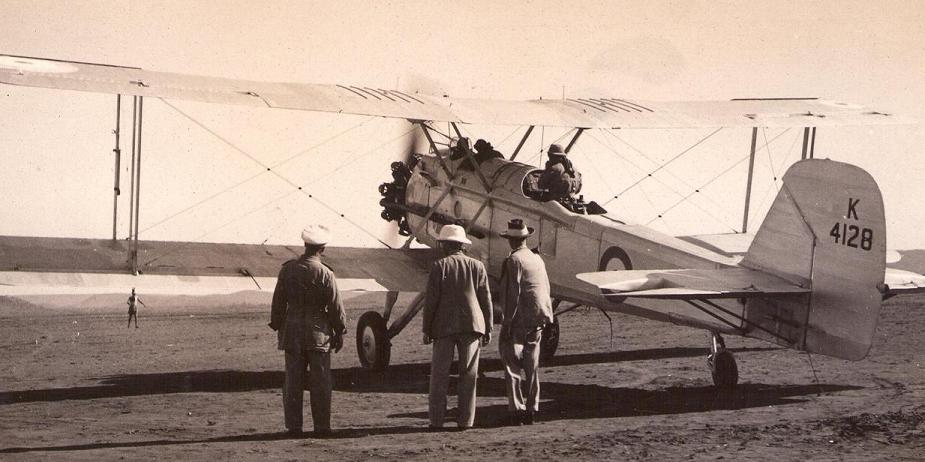 |
| Vickers Vincent of No 8 Sqn, probably taken
in Ethiopia in 1936 Photograph courtesy of ©David Chapman-Andrew from the collection of his late father Edwin A Chapman-Andrews |
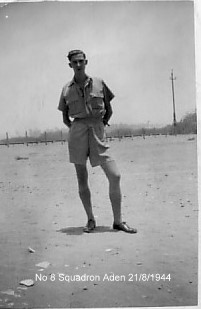 |
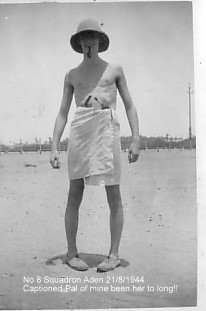 |
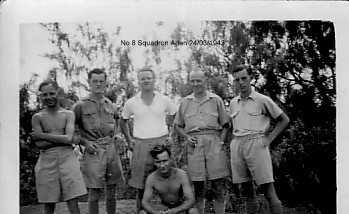 |
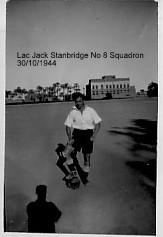 |
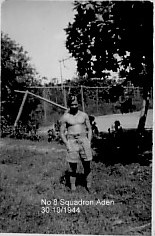 |
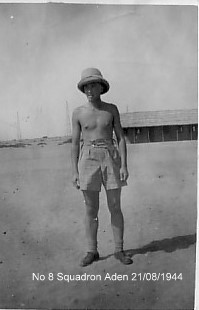 |
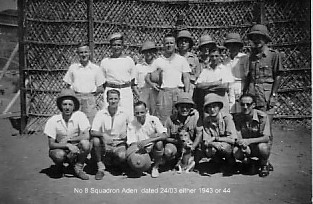 |
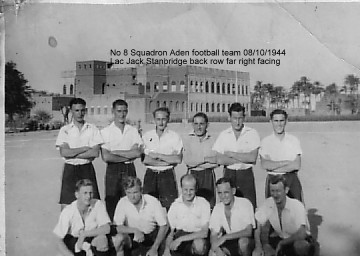 |
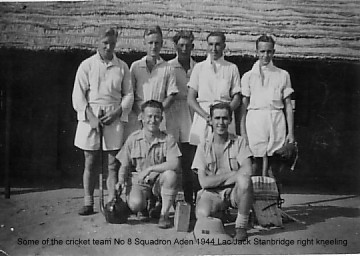 |
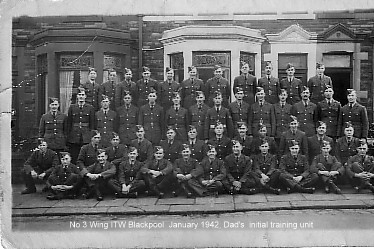 |
Photographs courtesy of ©Dave Stanbridge |
|
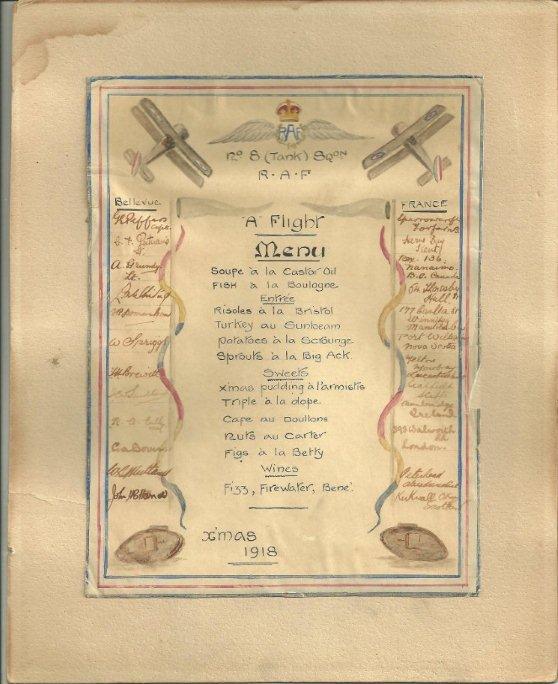 |
Christmas Dinner Menu, December 1918 Menu courtesy of ©John Spriggs |
[Aircraft & Markings | Personnel, aircraft and locations | Commanding Officers]
No 8 Squadron Association: - The Secretary, VIII Squadron Association, c/o No.8 Squadron, RAF Waddington, Lincoln, Lincolnshire, LN5 9NB
No 8 Squadron website: - [http://www.users.globalnet.co.uk/~8sqnwad/]
 No 9
was the first squadron to be formed outside the UK when the HQ Wireless Unit at St Omer was raised to squadron status on 8 December
1914. However, its existence was short-lived as the decision was taken to
distribute wireless facilities in all squadrons, therefore the resources of No 9
were broken up and allocated to the other corps squadrons, the unit being
formally disbanded on 22 March 1915.
No 9
was the first squadron to be formed outside the UK when the HQ Wireless Unit at St Omer was raised to squadron status on 8 December
1914. However, its existence was short-lived as the decision was taken to
distribute wireless facilities in all squadrons, therefore the resources of No 9
were broken up and allocated to the other corps squadrons, the unit being
formally disbanded on 22 March 1915.
It was reformed a few days later, on 1 April 1915, at Brooklands in the radio training role. A move to Dover also brought coastal patrols into its remit. It moved back to France in November 1915, carrying out bombing and recce missions, until late 1916 when it became a corps squadron, its BE's being replaced by RE8's in May 1917.
Having received a few Bristol Fighters, these began to replace the RE's in February 1919, the squadron remaining on the continent until the following June, when it returned to the UK as a cadre and disbanded on 31 December 1919.
Re-formation in what would become its main role until the present day, a bomber (strike) unit, took place on 1 April 1924, equipped with Vimys. Specialising in night bombing, as commemorated by the squadron badge and motto, the squadron was successively equipped with Virginias of various makes from 1925, Heyfords from 1936 and Wellingtons from 1939.
On 18 December 1939, the squadron took part in the disastrous daylight raid on Wilhelmshaven losing five aircraft and bringing about an end to RAF attempts to carry out daylight raids with 'heavy' bombers. Following a detachment to Lossiemouth during the Norwegian campaign the squadron settled down into the routine of a main force bomber squadron within No 3 Group.
July 1942 brought the last Wellington operations and conversion to Lancasters as well as a move to No 5 Group. On 12 November 144, together with No 617 Squadron, they dropped 12.000lb 'Tallboys' on the Tirpitz in Thomso fiord, causing her to capsize. As the end of the war in Europe loomed, No 9 was earmarked for operations in the Far East as part of 'Tiger Force', which was commanded by AM Sir Hugh Lloyd who had commanded No 9 at the beginning of the war. However, the Japanese surrender after the dropping of two A-bombs brought these plans to a close, although the squadron did move to India to undertake aerial survey work until April 1946.
Lancasters were replaced by Lincolns in July 1946 and in May 1952 the first Canberras arrived bringing the squadron into the jet age. In 1956, the squadron used its Canberras in action in both Malaya (March-May) and Egypt (October). The squadron disbanded for the first time since 1919 on 13 July 1961. A new No 9 Squadron appeared at Coningsby on 1 March 1962, equipped with Vulcans, it was part of Britain's nuclear deterrent. However, in 1969 the squadron was moved to Cyprus to form part of the Akrotiri Strike Wing, together with No 35 Squadron. The rundown of Britain's overseas bases brought the squadron back to Waddington in 1975 where it remained until disbanding on 1 May 1982.
On 1 June 1982, it became the first squadron to be equipped with the Tornado GR1 at Honington, moving to Bruggen in RAF Germany in 1986. With the rundown of RAF Germany, the squadron relocated back to the UK at Marham, from where it operated against Daesh in Syria and Iraq as part of Operation SHADER. On 1 April 2019 it moved to Lossiemouth where it converted to the Typhoon FGR Mk 4.
| Standards | Battle Honours* |
| Award
of Standard
originally announced on 15 Jan 1952, effective from 1 Apr 1951 but presented:-
lst - 9 October 1956 2nd - 23 May 1984 ACM Sir David Craig. 3rd - xx xxx 2009 AM Sir Stuart Peach |
Western Front, 1915-1918:
Somme, 1916: Ypres,
1917: Amiens: Hindenburg Line Channel & North Sea, 1939-1945: Baltic, 1939-1945: France & Low Countries, 1940: Norway, 1940: German
Ports, 1940-1945: Fortress Europe, 1940-1944:
Berlin,
1941-1945: Biscay Ports, 1940-1945: Ruhr,
1941-1945: France & Germany, 1944-1945: Tirpitz:
The Dams: Rhine: Gulf, 1991:
Iraq 2003: Libya 2011: Iraq 2003-2011: |
Squadron Codes used: -
| KA | Feb 1939 - Sep 1939 |
| WS | Sep 1939 - Apr 1951 |
| AA - AZ | Aug 1986 - Current |
[Aircraft & Markings | Personnel, aircraft and locations | Commanding Officers]
No 9 Squadron Association Website
 From 1 January 1915 until 25 July, No 10 acted as a training
squadron at Farnborough. Arriving in France equipped with the standard
BE's, it carries out corps reconnaissance tasks, re-equipping with FK8's in
September1917 which it retained until February 1919 when, as a cadre, it
returned to the UK to disband on 31 December 1919.
From 1 January 1915 until 25 July, No 10 acted as a training
squadron at Farnborough. Arriving in France equipped with the standard
BE's, it carries out corps reconnaissance tasks, re-equipping with FK8's in
September1917 which it retained until February 1919 when, as a cadre, it
returned to the UK to disband on 31 December 1919.
It did not reform until 1 January 1928 when it rejoined the order of battle as a night bombing squadron at Upper Heyford equipped with Hydrabads. These were replaced by Hinaidi's in April 1931 at the same time as the squadron moved to Boscombe Down. Virginias arrived in September 1932 but two years later these were replaced by Heyfords. Two other squadrons were formed from a nucleus provide by No 10, No 97 on 16 September 1935 and No 78 on 1 November 1936.
A move up north to Dishforth in 1937, also brought further re-equipment, this time in the form of the monoplane Whitley. No 10 took the Whitley to war in 1939 as part of No 4 Group and continued to fly the type until December 1941 when the Halifax arrived, operating as part of the main force for the remainder of the war.
As part of No 4 Group, the squadron was transferred to Transport Command on 1 May 1945, initially using its Halifaxes, but from August Dakotas replaced these and the squadron move to India in October remaining on transport duties until disbanding on 20 December 1947.
Oakington was No 10's next home when No 238 Squadron was renumbered there on 'Bonfire Night' 1948, still flying Dakotas, which it used during the 'Berlin Airlift' before being disbanded again 20 February 1950. The squadron reverted to the bomber role on 15 January 1953 when it became a Canberra unit at Scampton. It took part in the Suez operations in 1956 before disbanding again on 15 January 1957.
Another period as a bomber squadron began on 15 April 1958 at Cottesmore, this time as part of the V-Force equipped with Victors, but again this was relatively short-lived as the squadron disbanded on 1 March 1964. Its next re-birth, however, would become its longest period of existence, when it became the first squadron to operate the VC10 at Brize Norton on 1 July 1966. It still operates the type today, although following conversion of its aircraft to C(K) Mk 1 standard it now includes air-to-air refuelling in its tasking. However on 14 October 2005 it was disbanded, its aircraft and personnel being absorbed into No 101 Squadron. The squadron reformed on 1 August 2011 to operate the Voyager at RAF Brize Norton in the Air Transport and Air-to-Air Refuelling role but it's aircraft did not begin arriving until 2012.
| Standards | Battle Honours* |
| Award
of Standard
originally announced on 15 Jan 1952, effective from 1 Apr 1951 but presented:-
lst - 21 October 1958 HRH The Princess Margaret 2nd - 30 September 1988 Rt Hon Margaret Thatcher. 3rd - 30 Jan 2015 HRH The Princess Royal |
Western Front,
l915-1918: Loos: Somme,
1916: Arras: Somme, 1918
Invasion Ports, 1940: Channel & North
Sea, 1940-1945: Norway,
1940: Fortress Europe, 1940-1944:
Biscay Ports, 1940-1945: Ruhr,
1940-1945: German Ports, 1940-1945: Normandy,
1944: Berlin,
1940-1945: France & Germany, 1944-1945: Rhine:
Gulf, 1991: Iraq 2003: Iraq 2003-2011: |
Squadron Codes used: -
| PB | Nov 1938 - Sep 1939 |
| ZA | Sep 1939 - Aug 1945, 1948 - 1950 |
[Aircraft & Markings | Personnel, aircraft and locations | No 10 Sqn Association | Commanding Officers]
|
(A Centennial History of No 10 Squadron) by Ian Macmillan with Dick King |
*Honours in Black are those the squadron has a been granted the right to emblazon on the Squadron Standard, but does not do so.
Honours in Red are those actually emblazoned on the Squadron Standard
Honours in Blue are those the squadron has not been granted the right to emblazon on the Squadron Standard
Squadron badges on this page are courtesy of Dave Clifford
except those squadrons marked #
Badges of squadrons marked # have been produced by Mary Denton on behalf of the RAF Heraldry Trust and are displayed on this page with the permission of the RAFHT. Mary Denton and the RAFHT have probably completed half of the 'official' badges authorised but are still looking for sponsorship for the remaining badges. The work continues and details can be found on their website.
© Crown Copyright is reproduced with the permission of the Directorate of Intellectual Property Rights
This entry was last updated on 18/06/25©
![]() Organisational
Index
Organisational
Index ![]()